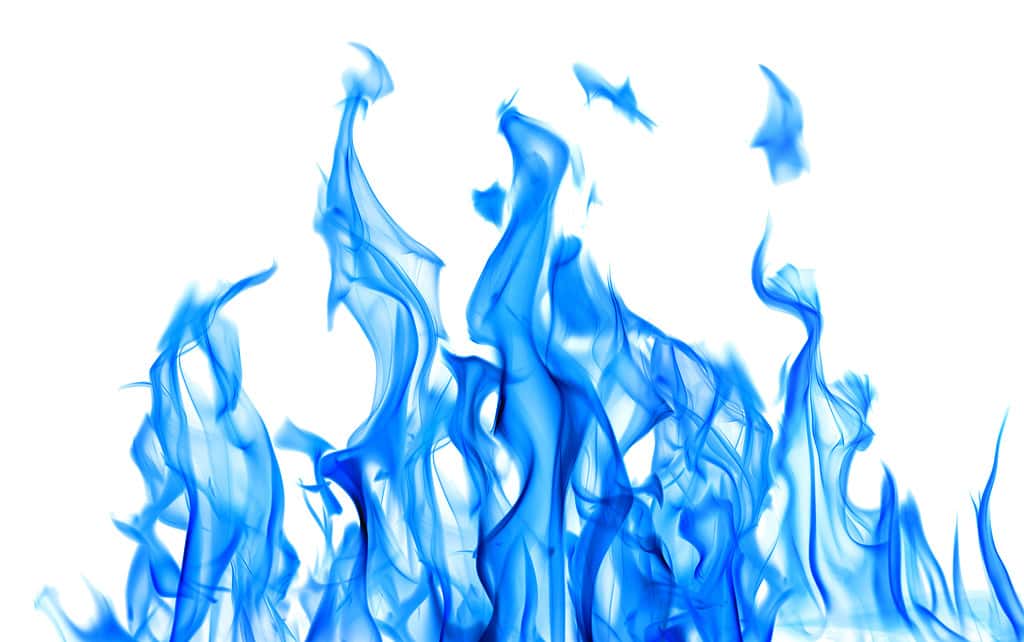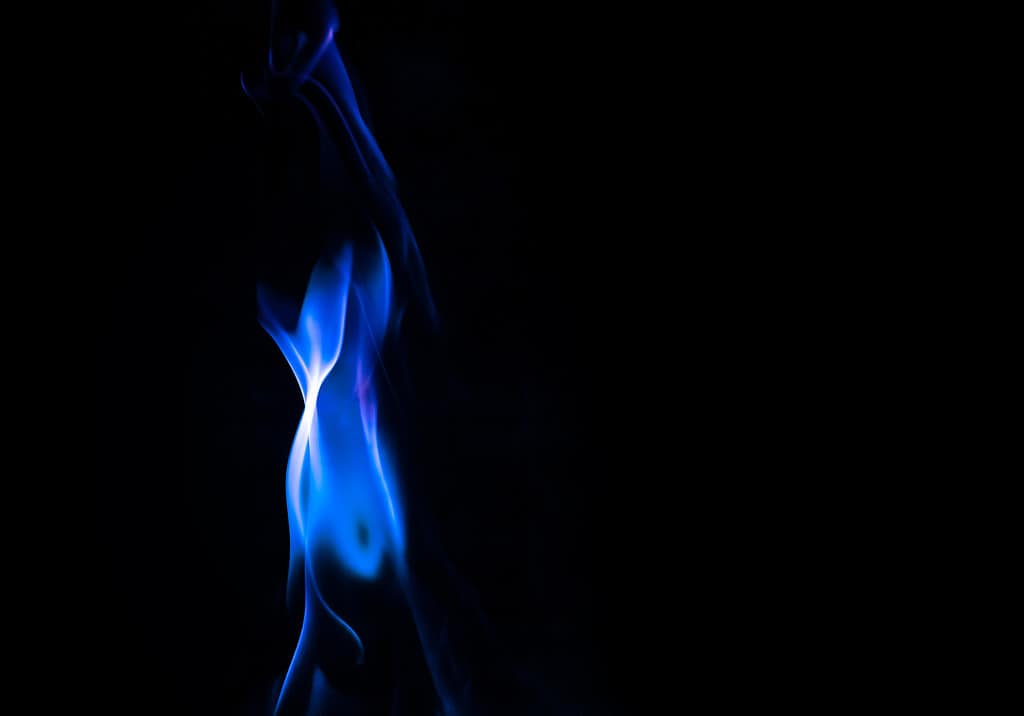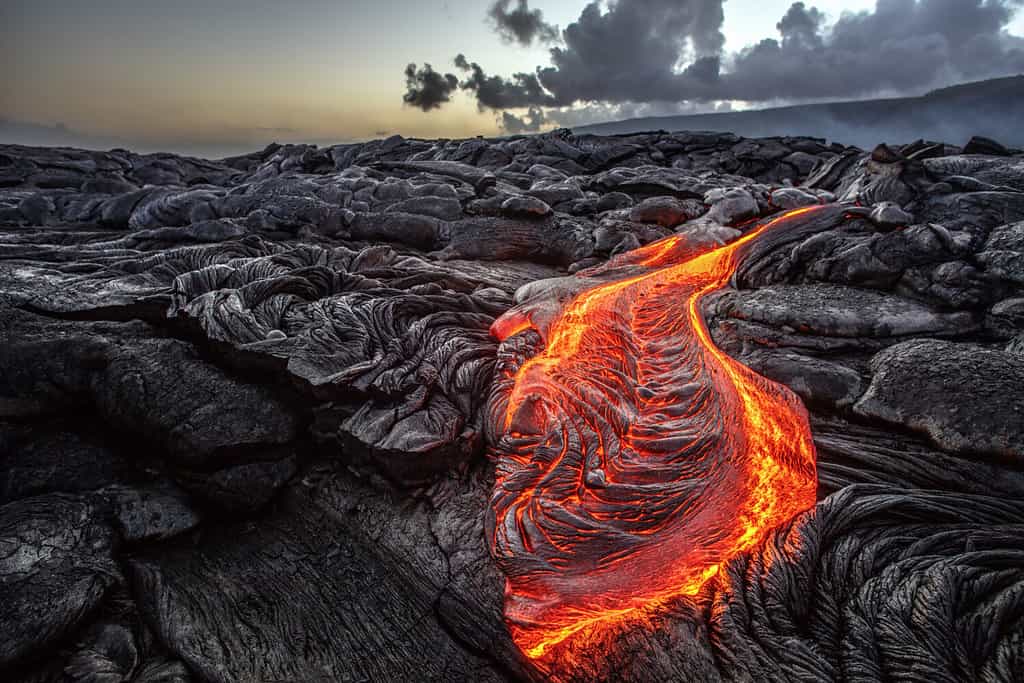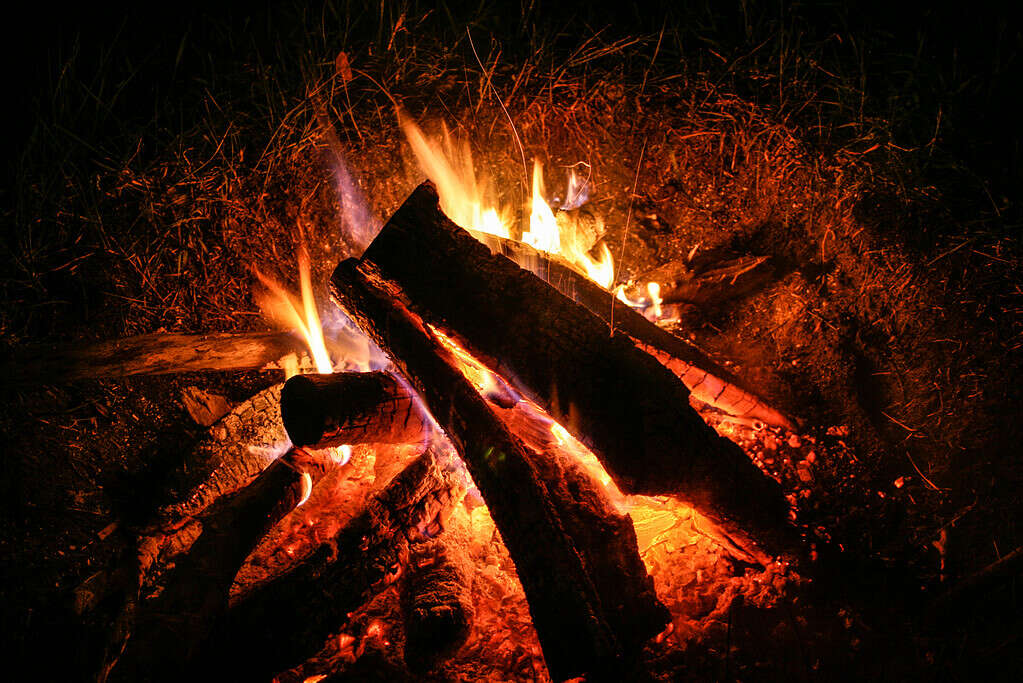Considered the first greatest discovery in human history, fire unites humans across the world by providing a source of heat and light. While campfires, candles, and pizza ovens usually burn with red, orange, or yellow flames, there’s another color you’ll see on occasion: blue. Blue fire is the hottest part of the common flame, but do you know how hot blue fire burns?
Keep reading to discover just how hot blue fire really is, what it’s hotter than, and where you’ll see it burn.
How Hot Is Blue Fire?

Blue flames are the hottest part of a fire.
©DrPAS/iStock via Getty Images
Blue fire is the hottest part of the common flame, burning between 2600 to 3000 degrees Fahrenheit or 1426.6 to 1648.9 degrees Celsius. You’ll see common flames, or common fire, burn blue at their hottest points. While it’s certainly not the hottest thing on the earth, it’s hotter than every other part of a fire’s flames.
Fire is the combustion of organic material and oxygen — and gasses burn quicker than oxygen. So, on a stovetop with natural gas, there’s more gas to burn and they set themselves ablaze quickly to burn at a very high temperature.
Blue fire also occurs based on chemical reactions, like sulfur. Purposefully burning cuprous chloride, butane, arsenic, and germanium will produce a blue flame too.
What Is the Hottest Color of Fire?

Blue flames are the cleanest burning and don’t usually generate as much soot.
©ljphoto7/iStock via Getty Images
Blue fire is the hottest color of fire. Myths perpetuated that white was the hottest color of fire, but blue fire’s temperatures beat out white flames by about 200 degrees Fahrenheit.
AZ Animals consulted with expert William White, the current chief technology officer at EcoMotionCentral.com about how nature uses color to indicate intensity. In his opinion, blue fire is a fascinating part of the flame based on how it’s created.
“The blue flame is the result of a process known as complete combustion, where all the fuel is burnt with enough oxygen, leaving minimal byproducts like soot or smoke, which is why it’s also considered cleaner.”
When it comes to temperatures of the common fire, red is the coolest and blue is the hottest. Here’s a handy guide to flame colors and the accompanying temperature.
| Flame Color | Temperature (or range) in Fahrenheit | Temperature (or range) in Celsius |
|---|---|---|
| Red | Between 900 and 1800 | Between 482.2 and 982.2 |
| Orange | 2000 | 1093.2 |
| Yellow | 2200 | 1204.4 |
| White | Between 2400 and 2700 | Between 1315.5 and 1482.2 |
| Blue | Between 2600 and 3000 | Between 1426.6 and 1648.9 |
Is Blue Fire Hotter than Lava?

Even the hottest lava isn’t as scalding as blue flames.
©Willyam Bradberry/Shutterstock.com
Yes, on average blue fire is hotter than lava.
According to measurements from the U.S. Geological Survey (USGS), lava and lava tubes recorded in Hawaii were less hot than the average blue flames burn. For example, Kīlauea lava at the time of eruption measured 2,140 degrees Fahrenheit (or 1,170 degrees Celsius). The lava tubes heated the lava more as it brought it to the surface for a peak temperature of 2,200 degrees Fahrenheit (about 1,250 degrees Celsius).
As soon as the lava gets exposed to air, it cools by hundreds of degrees a second — which is why the eruption from the tube made the lava cooler, not hotter.
Blue fire is also hotter than magma — or lava that hasn’t broken the surface of Earth’s crust. Magma can range between temperatures of 1,300 and 2,300 degrees Fahrenheit, but it doesn’t reach blue flame levels.
Where Do You See Blue Fire Most?
Despite its radiance, you don’t see blue fire all that often. That’s partly because it’s so hot — with that much heat, it only occurs in small, controlled settings.
- Gas stoves. Natural gas burns blue because it was designed to. If burners consistently have yellow or orange flames, it may generate carbon monoxide — and you should call a technician.
- Matches and candles. Pale blue fire erupts because it’s a clean flame caused by heated molecules ready to release light.
- Campfires. When carbon and hydrogen burn on the surface of wood, they will burn blue. As the wood lights, the flames cool and turn to orange, yellow, and red.
There’s an unrelated “blue lava” that burns in certain volcanoes based on the amount of sulfur or methane in the magma. You can see these volcanoes in Hawaii and Indonesia at the Kawah Ijen volcano, where cracks in the lava or underground show startling sights of blue flames.
How Hot is Fire?

Blue flames will lick the sticks of a campfire at first burn.
Fire burns at different colors and different temperatures, as seen in the chart above. The very lowest a fire can get is around 752 degrees Fahrenheit (or 400 degrees Celsius). These are known as “cool flames” and are a naturally occurring phenomena. Blue flames bring the hottest temperatures for naturally occurring fire, topping out around 3000 degrees Fahrenheit.
Fire is fickle and depends on many different things to burn, including oxygen, heat, and fuel. Wood burns differently from a wick, which burns differently than aluminum, cast iron, and steel.
Burned by Blue Fire

Burns from blue flames can severely injure you.
©Apisit Suwannaka/iStock via Getty Images
Because common fires are mostly made of red and orange fire, not blue you probably won’t have to worry about blue fire burns. Getting burned by blue fire isn’t impossible, though! When you’re around any open flame, use caution and safety to avoid burns.
Blue fire is dastardly hot, and more than a second or two of exposure can significantly affect body parts. On the off chance, you do get a burn, get away from the fire immediately before treating your injury as you would any other first-, second-, or third-degree burn. Remember, the degree of a burn relates to how deeply the burn affects your skin. The longer you’re exposed, the worse the burn will be.
For first-degree burns, damage should stay pretty superficial and the injury will be minor. Cool the burn immediately before applying petroleum jelly to the affected area. Wrap it in a sterile bandage to protect it from further harm or infection. If you get a first-degree burn from blue fire, don’t put butter or ointment besides petroleum jelly on it — it may cause an infection.
If you’ve received a second-degree burn from a blue fire, you may want to visit a doctor at your earliest convenience. These burns reach the epidermis and dermis, meaning your burn may swell, be painful to the touch, and blister.
Third-degree burns need a physician or medical professional’s help. If you’ve obtained a third-degree burn from blue fire, the flames have destroyed the nerve endings, epidermis, and dermis of the spot — and may have done damage to your bone as well.
Blue Fire Fun Facts
- In Indonesia, the “blue lava” or “blue fire” created by the burning sulfur is called Api Biru.
- Blue fire has made its way into pop culture. In Avatar: The Last Airbender, a character named Azula is the only one who wields blue flames — which fans speculate was a conscious decision to give imagery to her deep-seated hatred.
- While blue fire is the hottest of the flame colors, it’s far from the hottest thing on earth. The surface of the sun on any given day is over 100% hotter than the hottest blue fire flame.
Fire Burns Blue
Maybe you’ve seen blue fire while attempting to light your stove, while striking a match, or at the beginning of a campfire. Blue fire is beautiful, but be careful not to touch it. Most people don’t get blue fire burns because the fire — if there’s lots of it — is just too hot to get close to.
Now that you know how hot blue fire is, discover how hot fire is and what it can melt.
Thank you for reading! Have some feedback for us? Contact the AZ Animals editorial team.








